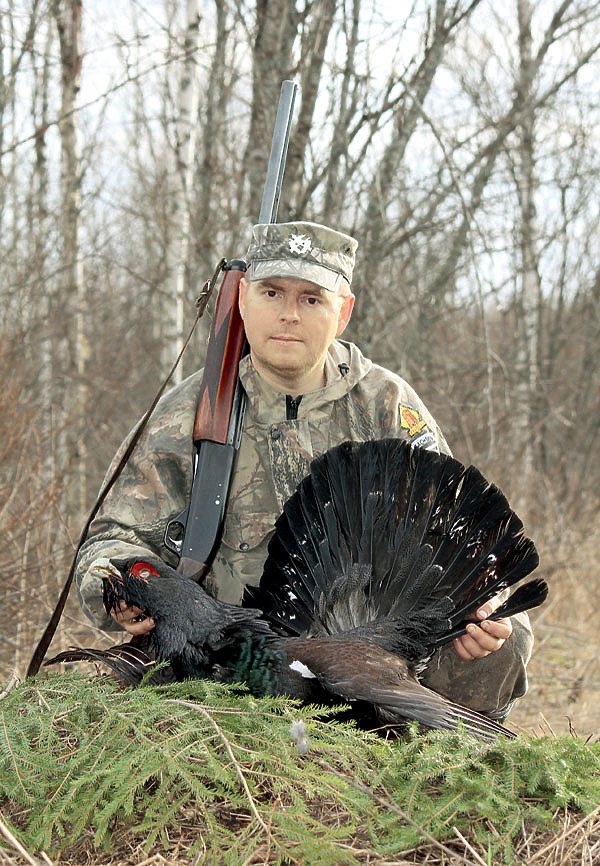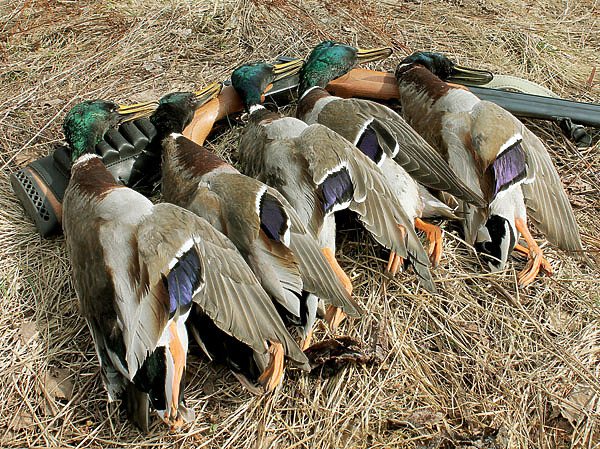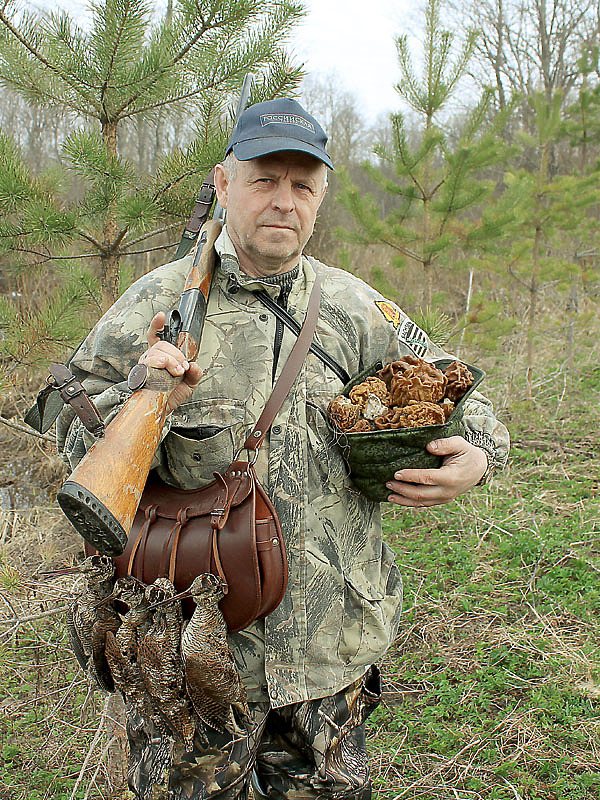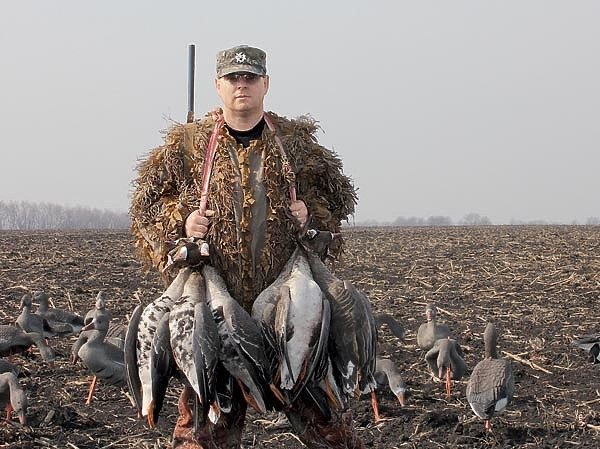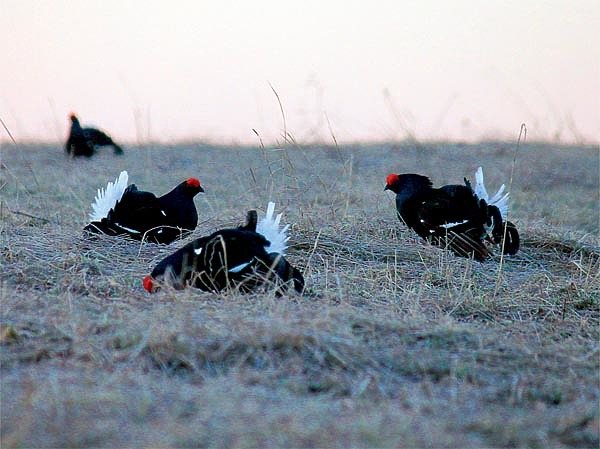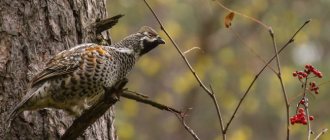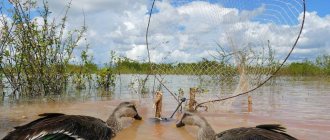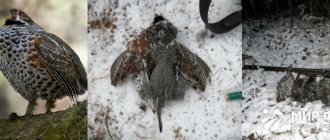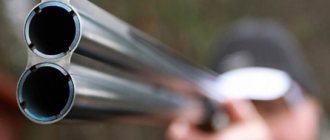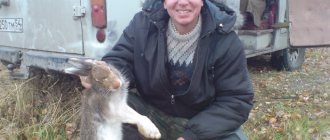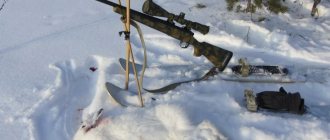General hunting rules
The hunting season for waterfowl is long. Hunting is divided into two seasons. Each is conducted in certain ways. Before setting out on a practical hunt for prey, it is necessary to study the features of bird catching in these times. Plus, since you will have to hunt with a firearm, and even at a flying bird, shooting training at a moving target is necessary. You will need to learn how to properly camouflage yourself, build ambushes and huts.
Shooting has one more detail - the shooter must be able to hit the target with both eyes open. Regular target shooting, its basic training is different from this, which is why additional training is needed. It is worth being conscientious in choosing the right equipment, items and tools. With their help, the catcher will be able to effectively hunt for waterfowl in any season or method. Safety measures when catching birds alone or in groups, just like a hunter’s license and a weapons permit, are mandatory factors for access to any game or bird.
How to prepare, in what seasons to hunt, the necessary equipment for duck hunting - all this is in this article.
Hunter's equipment
Comfortable shooting requires a proven weapon, high-quality ammunition of a certain caliber and convenient ammunition.
Weapon
The choice of weapon is a matter of individuality. Today, the use of semi-automatic hunting rifles rivals traditional side-by-side and over-and-under shotguns. The main thing you need to pay attention to is: the accuracy of fire; and a sharp fight. The basic rule: the weapon must be in working order.
Ammo
During the hunting process, different types of waterfowl may be caught in the sight of a weapon. For shooting birds, there are cartridges with certain numbers from three to seven. In this case, cartridges with shot No. 5 are considered universal. The cartridges must be suitable for shooting. The relevant information about the production time of cartridges and terms of use is printed on the boxes. Shooting game with damp cartridges, with visible signs of deformation and expired cartridges is not allowed.
Ammunition
The shooter's ammunition kit includes a bandoleer or pouch for storing cartridges of different calibers. Waist belt, pendant (toroka) for trophy game. Ammunition includes a gun case, preferably made of durable water-repellent fabric, and a backpack. Don’t forget about choosing a hunting knife, which can come in handy at any time.
Camouflage
Light, windproof jackets are suitable for “walking hunting”. Pants with water-repellent fabric and swamp boots. When hunting from a boat, you need to stock up on two sets of clothing. One is a lightweight option. The second is an insulated set, which may include two sweaters, thermal underwear, woolen socks and warm trousers. Such measures are related to movement on water and the characteristics of hunting waterfowl.
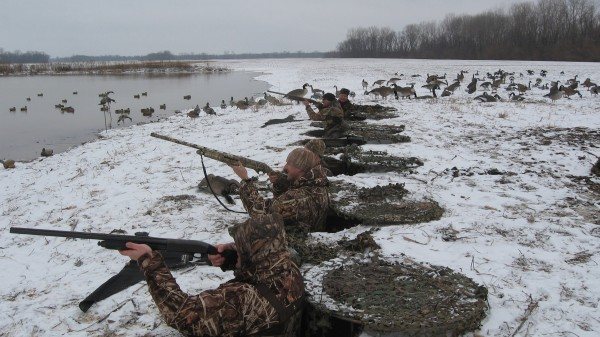
Preparing for a duck hunt
Catching ducks is generally a productive undertaking. But sometimes beginners may complain that, having gone on a game birding trip, they returned empty-handed. To avoid such frustration and waste of time, you need to be well prepared before going out to fight a bird.
It is worth starting with an assessment of the type of duck, and therefore their habitat. In nature, ducks are divided into two types:
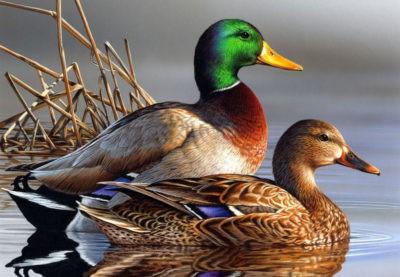
Mallard;- Diving scaup.
Knowledge of bird categories gives the catcher the correct behavior in their feeding and habitat areas, and therefore increases the results of hunting it. That is, at the very beginning of the hike it is worth assessing the type of game with a complete orientation of the area in which the fighting will take place.
The mallard is known to try to feed in the shallows, in the reeds. She likes to feed in the evening, or in complete darkness. With such a bird, it is necessary to prepare ambushes near shallow water and thickets of river vegetation before attacking. Additionally, you need to study its flight routes.
Diving game, on the contrary, has little relation to land. Foraging is done mostly on the water. This means that the shooter needs to take additional measures to prepare for the hunt in the form of obtaining additional equipment - a boat - in order to successfully complete the trip to the flying dives. He will also need a faithful companion - a dog, which, after an accurate shot from the dense thickets, will deliver the shot duck to the owner.
Assessing the terrain and the bird itself provides the remaining data and guidelines for preparing for the trip, ensuring its success and true pleasure. A frivolous attitude towards such things leads to a negative and negative result in the end.
Spring hunting: subtleties and trifles
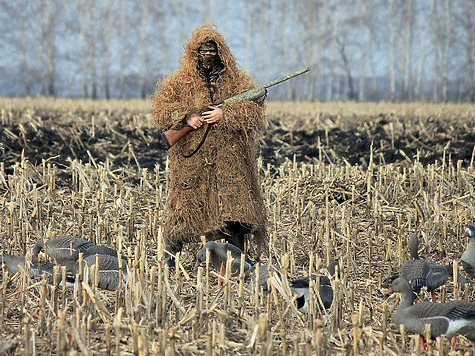
I have one too, and I want to share it.
Perhaps I won’t say anything new, but I think I’ll help novice hunters with something.
So often, upon arriving at a place, we suddenly discover that we forgot to take some equipment or food.
Although, planning to hunt for more than one day, we filled the trunk and trailer full with things!
Believe me, my friends and I have found ourselves in this situation more than once.
Therefore, before your trip, always think through and make a list of the things and equipment you need, point by point.
1. Weapons and ammunition, knife, bandoleer, etc. 2. Documents for weapons and transport, hunting license, passport. 3. Tent, hut, stuffed animals, saw, axe. 4. Decoy ducks, geese and accessories (spare boots, cords, circles, carabiners, food, etc.). 5. Clothes: jacket, fleece suit, thermal underwear, socks. 6. Shoes: waders, waders and always insulated shoes in case of frost. 7. Products taking into account the timing of the hunt. 8. Medicines for yourself that are not included in the standard first aid kit. 9. Money.
The list, of course, can be expanded and continued - it is individual.
|
| Photo by Dmitry Vasiliev. |
Many people keep decoy ducks, but those who don’t have them can either rent them or buy them for a ten-day hunting period. In this case, as a rule, questions arise about the work of ducks, especially if you take a duck, as they say, blindly.
So, the first thing you should pay attention to when buying a decoy is the cleanliness and smoothness of the plumage, fatness and the presence of a boot. If you buy a bird in the village, it’s a good idea to inspect the enclosure where your future mates live, listen to them, and observe their behavior.
It is ideal for the ducks to be near a pond, but a large trough in the enclosure will also work. If you have neither one nor the other, you should think about buying ducks.
Only with constant contact with water do the decoy feathers, lubricated with fat from the coccygeal gland, not get wet and the duck works without fear of cold water. Even the constant quack of a decoy in the enclosure does not guarantee that it will work just as well during hunting in the grounds.
The point here is this. The bird, accustomed to its relatives and to the enclosure in which it is located, behaves at ease, as if at home. In unfamiliar places and with an unfamiliar hunter, she finds herself in a stressful situation, everything seems dangerous to her, she hides and is silent.
Therefore, decoy ducks must be taken to the farmland so that they can get used to the new environment, get acquainted with wild birds, and get used to the new owner. Only hardened decoys work well.
All this must be done in advance, a month or at least two weeks before the hunt. Rarely do any sellers raise ducks. If you meet such people, hold on to them and don’t lose touch with them!
|
| During spring decoy hunting, only male duck breeds are allowed to be hunted. The mallard drake is the most prized trophy in a hunter’s bag. Photo by Dmitry Vasiliev. |
If you plan to hunt near your house for the upcoming ten-day period in spring, then you need to take care of choosing a place and building a hut in advance.
Typically, mallards fly from their wintering grounds much earlier than the opening day of hunting, therefore, having become accustomed to the built huts, the drakes sit down with the decoy duck without feeling any danger.
Of course, when building a hut, it is necessary to ensure that it blends in with the surrounding area as best as possible. For the last five years I have been successfully using a portable hide covered with bast.
True, the hut was initially too light, but the inevitable dirt corrected this shortcoming. Now the skradok is indistinguishable from last year's grass.
The best places for hunting drakes are flooded lowlands overgrown with bushes, flooded forests, floodplain meadows, small overgrown lakes and swamps in the forest, and peat maps. Open deep lakes and fast rivers are not suitable.
The former are deprived of protective thickets; diving ducks are more likely to be found there. As for the latter, in a strong current the decoy duck quickly becomes exhausted, and the beaten drake floats away with the current in the blink of an eye.
Another thing is the shallow bay formed by this river and hidden from prying eyes by reeds, with bushes flooded with water. There is food, shelter, and rest here. On such a hunt you will have to sit for a very long time, so a comfortable folding chair with a backrest will not hurt.
Sometimes when getting a trophy out of the water, the length of the waders is not enough. Waders or a wetsuit will help here. And I often use a seven-meter carbon fiber rod with a tee at the end.
A loop with a tee is inserted into the connector at the end of the fishing rod, and the fishing rod is expanded to the desired length. This rod is lighter than waders or a wetsuit, especially if you have to walk a long way to the pond.
|
| Photo by Dmitry Vasiliev. |
Sometimes even working ducks are silent, making the hunt gray and insipid. In such cases, I use a wind decoy to attract drakes. So more than once I managed to catch a couple of greenheads at dawn.
But still, most often I use two ducks at the same time, planted on the water so that they do not see each other, but only hear. Constantly talking, the decoys do not let me or the drakes get bored.
With this method of hunting, the norm was always obtained at dawn. But you need to remember that there are no two successful hunts in one place. Local drakes quickly grasp where the danger comes from, and even the sweetest-voiced decoy will not be able to fool him.
With a gross flight, the relevance of this statement is lost, but such happiness occurs extremely rarely.
And now about the cartridges. Cartridges No. 5–7 are used for drakes. I use #7 shot shells in a container. But you need to remember that you need to shoot no further than 35 meters. It is unacceptable to shoot at a drake if there is a duck on the same line with it.
Shooting at long distances with larger shot numbers only leads to an increase in wounded animals and a useless loss of game...
The woodcock draft is considered the most popular and beloved by all hunters. It would seem that everything is clear with her, but I will still give a couple of recommendations for novice hunters. It would be right to visit a familiar clearing a few days before the hunt and watch and listen.
Perhaps a lot has changed in a year: the forest was cut down, the road was dug up... But you never know what can happen that will ruin your opening holiday! If you don’t have time for exploration, then it’s better to wear waders in the forest, because you don’t know what you might encounter in the spring lands.
Hunting with wet feet is no longer hunting. I always carry a spare set of wool socks with me in a sealed bag. The necessary thing for woodcock traction is a flashlight, headlamp or hand-held - a matter of taste.
I use a headlamp so that when searching for and collecting wounded animals, my hands are free. There should also be a set of spare batteries.
|
| Finding a feeding field, digging trenches, and positioning the profile correctly is only a small component of successful goose hunting. Photo by Dmitry Vasiliev. |
After ten days of use, the battery can run out, as always, at the most inopportune moment. If you are in the forest for the first time or have come to hunt in an unfamiliar area, ask the locals.
In general, woodcock likes to drag along the intersections of forest roads, overgrown lowlands, along streams and small rivers, along overgrown clearings and clearings.
During the first days of heavy snow cover, woodcock drags along thawed fields, along the edge of the forest. If you do not have a gun dog (copper, retriever or spaniel) that searches for and retrieves dead game, try to stand so that the woodcock that falls after the shot is clearly visible.
Don't shoot a great bird unless you're sure you'll find it. Don't be greedy, show nobility. After all, while you are looking for a sandpiper that has fallen in the forest, several more birds will stretch out at the shot, which could be laid at your feet if you were a little more restrained.
Recommended shot for woodcock hunting is No. 7–9. I shoot woodcock with #9 shot shells in a container.
Goose hunting is perhaps the most difficult and interesting of all spring hunts. There is hardly a bird smarter and smarter than a goose. I've been hunting geese for fifteen years, and after each season there are more questions than answers.
Goose hunting is multifaceted and expensive both in time and money. Of course, we are talking about proper hunting, and not about anti-aircraft shelling of flocks from the nearest birch tree.
When you hear about your friends’ trophies and ask to take them on your next trip, you must understand that a successful team goose hunt depends on the preparedness and staffing of each team member.
Let’s try to figure out what is included in the minimum kit of a goose hunter.
Cartridges recommended for goose hunting are No. 0–3. I use regular cartridges loaded with 32g shot No. 1 and No. 3.
I never shoot and I don’t allow my friends to shoot beyond 35 meters. The usual shooting distance is 20–25 meters. After all, it is more important for us to deceive the goose by luring him as close as possible than to shoot with all the guns in the sky.
|
| Photo by Dmitry Vasiliev. |
The wood grouse is the giant of the bird kingdom. The dream and desired trophy of any hunter. Detection of capercaillie current is a complex and time-consuming undertaking.
They begin to look for the lek in March - early April using “drawings” left on the snow crust by lekking roosters, skiing around the pine forests bordering the swamps.
Currently, most of the leks located at a distance of four to five kilometers are known to local hunters, and this knowledge is passed on by inheritance. Most often, a city dweller is brought to the lek and brought to the lekking capercaillie for a certain fee.
Like any hunt, capercaillie has its own nuances and subtleties that you need to know.
If you are going to a current with eavesdropping and spending the night in the forest, then you need to have a compass, matches or a lighter in a sealed package, an ax or a hand saw for preparing firewood, a pot, stewed meat, cereals or pasta, salt, sugar, tea. And a lantern.
If you are going to a capercaillie lek for the first time, find out what shoes are best to wear. It’s no secret that the current can appear in a swamp, where the water is above the knee, and in a dry white-moss forest, where you can walk in boots.
You can’t get to all the points by car, so if you walk several kilometers through a muddy forest or swamp in warm clothes intended for spending the night, you will inevitably sweat, and when you arrive at the point, you’ll freeze and suffer all night.
To prevent this from happening, pack your outerwear and sweater in a backpack and travel lightly. I always take a spare T-shirt and socks. When I arrive at the bivouac, having cooled down from walking, I put on dry clothes and dry the wet ones over the fire.
When approaching a showing capercaillie in the dark, do not rush to shoot. Often your capercaillie is simply a pine branch. It is not for nothing that it is recommended to shoot the bird with precision, so that if you miss, you can correct the mistake with a second shot.
Show restraint, overcome the burning desire to shoot immediately and wait until dawn. Raise your gun and shoot only under the second knee of the capercaillie song at a clearly visible capercaillie sitting sideways, at the base of the wing. Use cartridges with shot No. 0–1.
I always use cartridges with shot No. 1, I consider them optimal. And never shoot a wood grouse further than 35 meters. The bird is very tough to wound, and no magnum will help catch a wood grouse beyond 35–40 meters.
|
| Exposed areas of the body must be masked: hands with khaki gloves, face with a mask or special paints. Photo by Dmitry Vasiliev. |
Everyone knows how poetic and beautiful grouse hunting is. Finding the current is not at all difficult: the muttering grouse can be heard for several kilometers. A few days before the start of the hunt, when you come within three hundred meters of the lek, use binoculars to mark for yourself the landmarks where the scutums are lekking on the ground.
After ten in the morning, come here again and use the previously marked landmarks to determine the exact location of the current. Feathers lost by birds, fresh and old droppings will help you with this.
Place the hut twenty meters from the expected center of the current. Three to five days are enough for wary black grouse to get used to the new structure. Position the hut so that the sun rises behind you and does not blind your eyes.
Dress warmly, because you will have to sit for more than six hours in freezing temperatures. If you walk far to the hut, then take a sweater or warm jacket with you and put it on already on the spot. Remember that a sweaty hunter quickly freezes.
Since you will have to walk to the hut in complete darkness, a flashlight is required, as is a thermos with hot tea or coffee. In the morning twilight it is difficult to determine the distance to a current black grouse, so it would be a good idea to measure it in advance and stick in sticks.
For hunting spring grouse, cartridges with shot No. 3–5 are used. I always use the 5 when shooting at distances up to 35 meters. Don't try to take two grouse with one shot. Ninety-nine times out of a hundred you won't take one.
The black grouse will fly away as wounded animals and go to predators. It is better to choose a lonely lekking rooster on the edge of the lek closest to you. Wait until he turns sideways and, aiming at the base of the wing, pull the trigger.
Refrain from shooting the blackling under the tail or in the chest. In most cases there will be wounded animals. You have plenty of time at your disposal, wait until the sun rises and be patient, which I am sure will reward you with a magnificent, blue-black, red-browed handsome man.
Break a leg! Love and take care of nature, and then you will have something to pass on to the next generation of hunters.
Dmitry Vasiliev May 6, 2020 at 12:31 pm
What equipment and weapons should you use?
As with any trip to wild animals, clothing and footwear should be tailored to the terrain, time of year and current weather. It should not contain elements that create additional noise. Trap gear is a combination of comfort, camouflage and sealing in place.
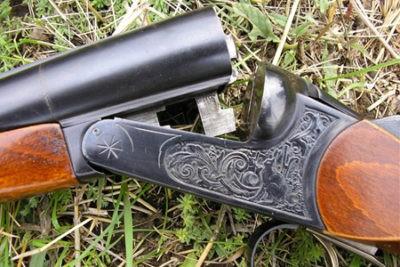
For catching birds, special attention is paid to the camouflage factors of the hunter in clothing and fishing items.
The bird is distinguished by its visual acuity. Therefore, if the shooter allows any unmasking moment in his clothes, equipment, even weapons, the failure of the campaign is guaranteed.
Camouflage suits are carefully selected - they must contain a fine camouflage pattern and not differ from the terrain and time of year in which the fishing will be carried out. They use camouflage nets, which help to further blend the shooter’s “hide-out”, his constructed hut or ambush into the terrain.
If shooting will be carried out from the water, it is worth considering camouflage and boats. Even a gun should not make the hunter stand out from the landscape. He can't expect victory.
In the present, camouflage of all items is carried out by self-camouflage or by purchasing factory-made items. The second disguise is better in quality, but much more expensive than homemade things. The choice is already out of every hunter's budget.
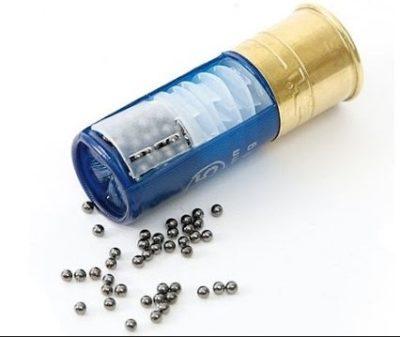
The type of duck weapon is selected depending on the hunting season. They are based on single or double-barreled shotguns loaded with different types of shot. The length of the barrels should not exceed 80 cm. The popular caliber for shooting in any hunting season is 12 mm.
During the warm period, shooting at game is carried out mainly from forest areas. The duck has to catch up or change its ambush site. Hence the conclusion about weapons - they require mobility. This is a key factor in the fast movement of the hunter. Fraction No. 3 or 4 is used.
In the fall, when the cold weather begins, flying game already has a certain layer of fat. This means that you will need a somewhat powerful shot and increased destructive power of the gun itself. The shot is selected as a number from 4 to 7. To increase the power of the weapon, a portion of gunpowder is added when loading. Shooting during this period is carried out mainly from the water at a flying bird.
Briefly about the species of wild ducks
Birds from the duck family - wild ducks - are small and medium-sized birds, with a wide flat body, strong wings, a neck that is not long, but not short, and flexible. The powerful paws have interdigital membranes, and the beak is wide and flattened. Excellent swim, dive and fly. The male is usually called a drake. They live in fresh water bodies - lakes, rivers, as well as in seas with slightly salty water. Some species are found in oak forests, where their favorite food is acorns. In general, these birds are not too demanding when it comes to nutrition - they easily adapt to any conditions. Duckweed, algae, zooplankton, small fish, frogs, insects and their larvae - this is an incomplete list of their diet.
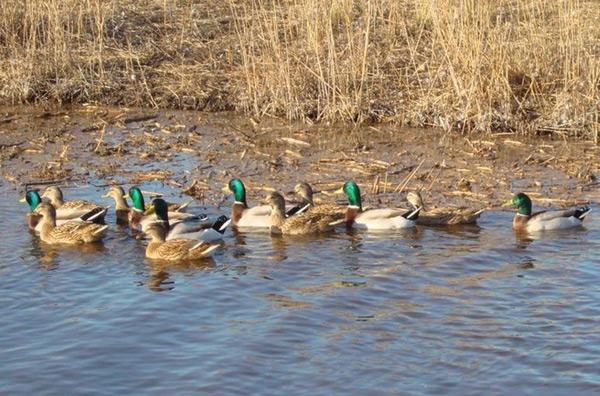
In regions with relatively warm winters and the presence of non-freezing reservoirs, they can live all year round, and some species fly to warmer regions for the winter. They live in large flocks and are monogamous. Drakes do not participate in brooding.
Many species of ducks are hunted, including mallard, pintail, wigeon and others.
Duck hunting by season
Catching flying game is officially permitted for a long period of the year. There are two parts, defining its methods and hunting conditions:
Spring
The warm season of the year for catching birds has a main difference legally. It is allowed to hunt only drake in the spring. A male game bird. Spring is the breeding season of the duck flock. At this time of year, males destroy clutches of eggs, which harms the development of the duck population. By shooting drakes in the spring, hunters preserve and develop the duck race.
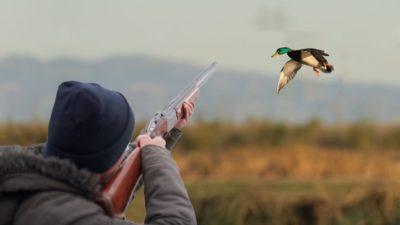
Spring bird fishing is carried out only at close range. A fishing option that will scare away female birds from nesting sites should not be allowed.
Hunting with stuffed animals is allowed. This method attracts the drake. An accurate shot is fired at him by a hunter frozen next to him. Hence, camouflage of the hunter and his equipment is an important factor.
Autumn
Cooler times of the year are more popular for birding. Regional differences in the start of such a hunt depend on the region of the country, and the first ones begin at the end of the last summer month. The essence of the season is also scientifically based. Autumn is the time when the duck hatch has already grown, become stronger and has become independent in flight.
Young individuals stay together in a flock. They live in dense thickets of water bodies. Therefore, in the first half of the autumn season, the shooter mainly catches birds from the water using a boat. The bird fight is taking place in flight. The typical time for shooting is in the evening, when ducks gather to feed.
At the end of September, duck flocks begin to fly south. It is effective to use additional hunting tools during this period - decoys, stuffed animals and other tools.
The period is characterized by high suspicion of birds, so the hunter must take into account the creation of a high-quality ambush, a hut for striking at dawn. It is better not to open fire on the entire flock at random. You need to select a target in advance and shoot accurately at it.
Permitted duck breeds for hunting
In Russia it is officially allowed to hunt 6 species of wild waterfowl:
- Mallard is the most common species. Males grow up to 60 cm in length, have an emerald-pearl color of the head and neck, which is separated from the rest of the body by a white rim. Females of borax reach 50 cm in length. Habitat: swampy ponds, reed thickets.
- Teal is a group of birds whose body length ranges from 30 to 40 cm. Males have a brighter color compared to females, but in the spring they become paler and more inconspicuous. A thin green stripe runs parallel to the eye line. The easiest time to spot them is during the mating season, when the males fly high above the female.
- Wigeon is a difficult catch, suitable only for a gambling person. Representatives of this breed fly quickly and behave very carefully. The easiest time to catch them is at the end of October - the birds are preparing for migration and wintering, and lose their vigilance. The color is light, the head is a bright brick color.
- Pintail is another fairly common species. Adults reach 55–65 cm in length and weigh more than 1 kg. They have a thin neck, and on a small head there is a gray beak with a characteristic blue tint. The tail is slightly pointed towards the end. This is a lazy, noisy bird.
- Shovelers grow up to 50 cm in length and weigh 1 kg. They have a wide beak and a flattened shape. Females are greenish-brown, while males are bright black.
- The gray duck is similar to the mallard or pintail. They have the same faded, nondescript plumage and can only be distinguished in flight. This breed has a white mirror with a bright chestnut spot in the middle. The beak is dark gray, the iris is brown, and the legs are yellow.
Types of duck hunting
In order to hunt flying birds efficiently and most professionally, any catcher, especially those starting their journey in this venture, needs to study all types of bird catching. This will give you the opportunity to return home with your loot and enjoy the process.
With stuffed animals
The type of bird hunting is very common and effective in any period. The basis is in its name. To implement it, it is necessary to make a bait in the form of a stuffed duck, and the shooter himself will hide at a distance acceptable for an accurate shot. When the prey approaches the bait, the hunter delivers an accurate blow, thereby victoriously completing fishing in this way.
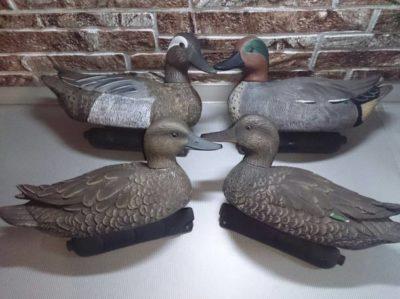
The stuffed animals are seated at a short distance from each other. Needed to replicate the natural arrangement of a duck flock in nature. The hunter's camouflage is carried out in reed thickets, in a pre-built hut in complete silence. The flock is expected to fly past the stuffed animals and, after finding the bait, launch into the water to feed. At this moment the final stage of shooting begins. This type of hunting is practiced during the dawn hours.
From the approach
An important factor of this method is that it cannot be used by inexperienced hunters. Requires good practical skills and advanced hunting skills.
Tactical actions: flocks of hiding ducks are looked for in thickets of reeds or thick grass. Walking at a close distance ensures that they are scared and shot in flight. The difficulty lies in the ability to secretly sneak up on the game, as well as having the skills to accurately shoot at a moving target in a short moment of time. This leads to the main conclusion that the use of such tactics by new bird catchers is prohibited.
With decoy
The fishing method refers to group hunting of flying game. Just like the method with stuffed animals, it uses additional hunting equipment – a decoy. Its sounds can attract flocks of ducks flying nearby to the water. They are fired upon to kill.
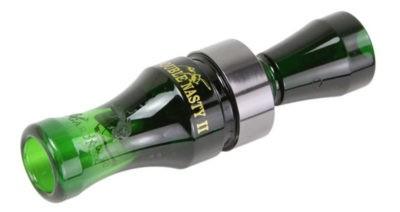
Tactics: a group of decoy catchers who have experience working with decoys emit sound signals to attract a flock of ducks. The second group sits in a pre-prepared ambush and prepares to make an accurate shot. The decoy is a sound instrument with which you first need to practice. To “quack” well to attract a duck, you need experience. Additionally, it is worth studying duck sounds so as not to violate the logic of their structure at the decisive moment. The barkers “quack” almost constantly until the desired effect of the method is achieved. Apart from studying duck calls, this is not a method of increased complexity. Can be used by beginner hunters after a little training.
With a decoy
The method, essentially built on its name, is a bit like a form of decoy hunting. But it differs in its modernization and functionality. The main difference is in the decoy. She not only attracts birds with her appearance, but also with her quack. Makes sounds that attract real drakes to her. The price is slightly more expensive than other methods of duck hunting, since such females need to be specially trained so that she is not afraid of shots.
Tactically carried out in shallow water, with a decoy tied to a tree or bush. To avoid losing the subject of the hunt. It perfectly attracts drakes, which, after they land on the water, can be targeted with precise shots. If the hunter's means allow, it is possible to use two decoys. In this case, both are placed in different places, out of sight of each.
With dogs
A type of flying game hunting that is dynamic. But the type of fishing requires the hunter to take increased measures to train discipline and educate his companion. Often, beginners using this method of hunting end up with their dog playing empty and frightening the entire pack.
Hunting with a stuffed animal
Spring hunting will be very effective if you properly prepare the stuffed animals.
Before you start hunting, you must purchase a stuffed animal; here are a few requirements for them:
- must be realistic;
- the color should not be dull or peeling;
- the stuffed animal should not shine.
You will need several decoys at once if you want to lure a large number of birds. In the spring, a good indicator is 20 stuffed animals planted on the water. In other countries, for example, in America, they can even put up to 100 stuffed animals, but this has not been observed in Russia. By the way, managing such a number of stuffed animals is not at all easy, and certain territorial conditions are required. There are also mechanical stuffed animals, they are even capable of flapping their wings, imitating a duck taking off or landing.
Advantages of stuffed animals:
- do not require maintenance or feeding;
- easy to transport;
- are purchased for more than one year;
- They don't care about random shot hits.
There is no need to place stuffed animals in places with strong currents; the result may not be the most pleasant: they will either float into a heap or float away forever. In addition, they should only be used in calm weather; an inverted scarecrow will be of little use.
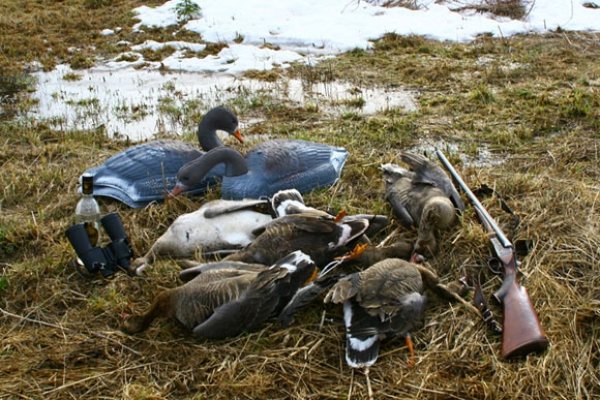
How to aim correctly?
Duck shooting is the basis for the success of all bird hunting. But the duck is on the move at the moment of its defeat. At the same time, mistakes in shooting are possible, which lead to failures and empty results, which will not bring pleasure to anyone.
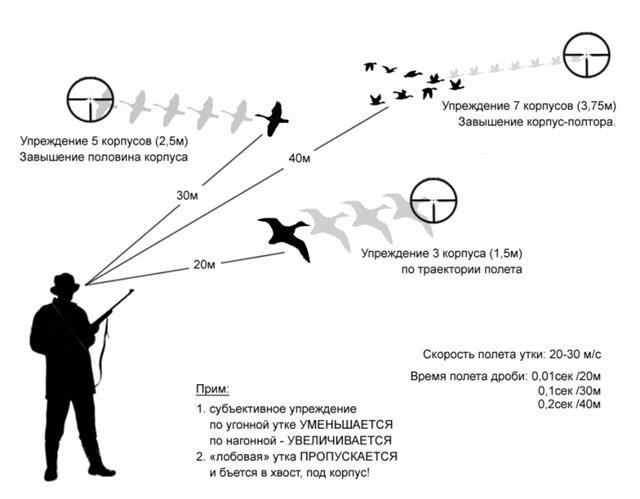
To avoid mistakes and blunders, there is an aiming system, after studying which the hunter in most cases will be able to deliver an accurate shot, which means returning home with the prey.
Sight on a sitting duck
A duck swims on the surface of the water. In this case, you should aim slightly lower than her body. An imaginary line is created just below the duck's contact with the water.
The duck is moving on land or frozen motionless on the edge of the shore. The catcher's sight is aimed at the middle of the body.
In the spring, there are practically no criteria for choosing a shooting point for a duck’s body. In the fall, due to the accumulation of a certain fat layer of the bird, you should not aim at the chest. Once there, the shot will only wound the bird, and in most cases it will be able to escape from the hunter.
Sight on a flying duck
The division is based on the duck hunting season. Assessing flying game and the distance to it is extremely necessary. The farther the target is, the larger the gap in front of it should be made when aiming; it is most effective in good weather, against the backdrop of a clean, clear sky, especially for beginners.
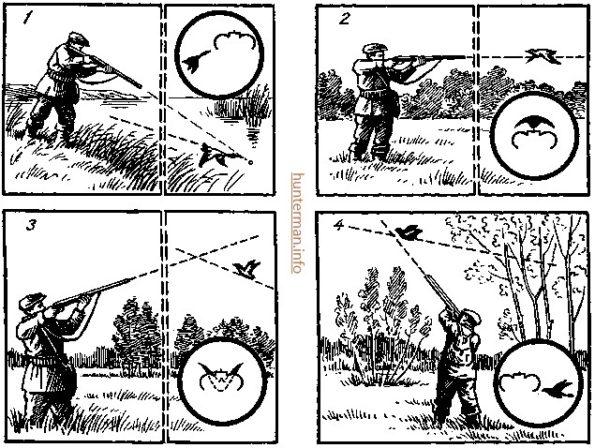
During the spring hunting period, you need to aim at the bird’s head.
In the autumn hunting season, shooting is mainly carried out at the incoming bird - here it is worth aiming proactively. The lead distance is about two meters.
Duck hunting is examined from all sides. The conclusion after all that has been described is the following - if a catcher wants to get a lot of amazing emotions, good rest and the result in the form of a decent duck catch as a result - he should work hard in his studies and practical training.
It is important to follow safety precautions. Under no circumstances engage in prohibited methods of catching game. Poachers are responsible for their actions according to the law!
Video on the topic:
Duck hunting. Exploration of a secret place. Duck hunting 2020. MP-153
16:28
DUCK HUNTING! Raid after raid!
23:25
BEST DUCK HUNTING of the 2020 season!!!!!! from the approach with the yagdtetrom. duck hunting
13:43
Duck hunting with drathaar and shorthaired pointer
27:52
Previous articleWild boar hunting – the most effective methods of hunting
Next articleRoe deer hunting
hunter
How to make a hide for goose hunting with your own hands
Skradok is not very difficult to make with your own hands. To do this you will need a minimum of materials available everywhere:
- elements for making a frame made of plastic or metal;
- camouflage mesh;
- camouflage fabric.
When designing a shelter, it is necessary to minimize the shadow that the device will cast. Geese are cautious birds, and you shouldn’t give them any extra cause for concern. On the ground, the skradok is additionally marked with branches or grass, any vegetation, but to enhance the camouflage, additional strips of fabric can be sewn onto the body.
The second important characteristic is the comfort of being in the blind. The dimensions of the device should allow you to easily sit in it and spend several hours in ambush.
The manufacturing process itself consists of calculating the dimensions of the frame and transferring them to the existing material. It is advisable to make the frame collapsible or foldable, this will make transportation and storage much easier.
After the frame is made, it is covered with camouflage fabric and doors made of camouflage mesh are installed. The principles for designing and assembling concealments of any type are the same. Many hunters use tubes from old clamshells as frame material. However, you can make a frame from small diameter PVC pipes.
Important! For objective reasons, if the hunting ambush is located in a hard-to-reach place, it is advisable to choose a device of light weight. This will help you save as much energy as possible during the transition and get a good result during the hunt.
On the hunt
The hunt begins early in the morning or late in the evening. The decoy duck must be fed before being released into the water. When spring comes, the drakes forget about caution and, hearing a duck, descend to her. Most often, they are not even embarrassed by the applicants killed before them (but it is still better to collect the shot carcasses as they appear). Fraction number 5 is used. And be careful when shooting so as not to accidentally hit the decoy.
Otherwise, hunting should not be too difficult. The main thing is not to scare away the flying drakes ahead of time and not to shoot your own duck. Then a pleasant pastime and many trophies are guaranteed.
